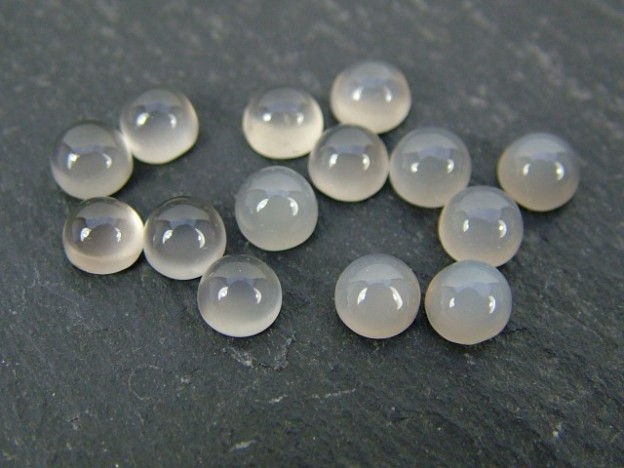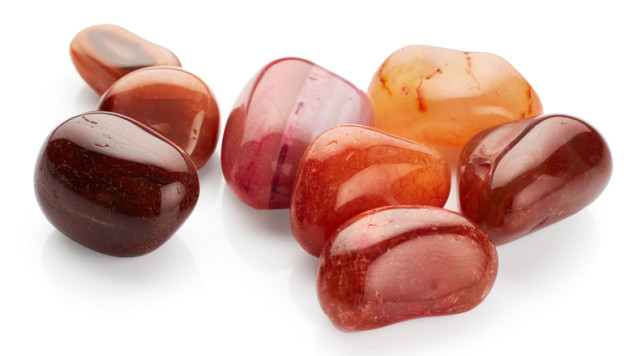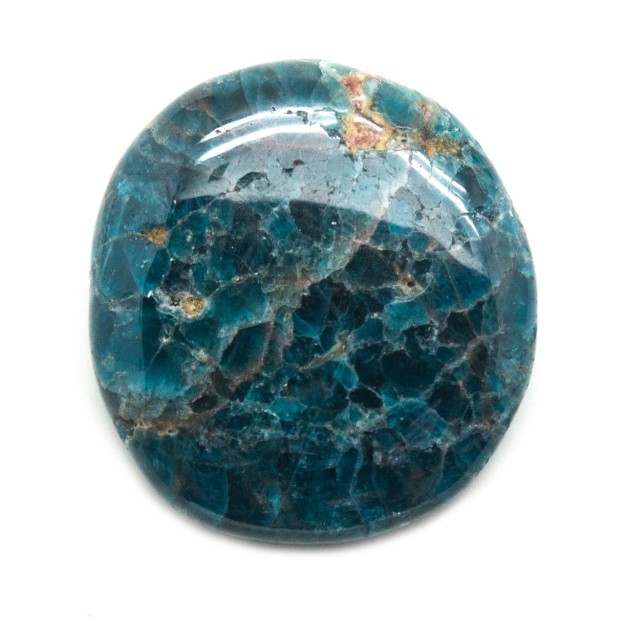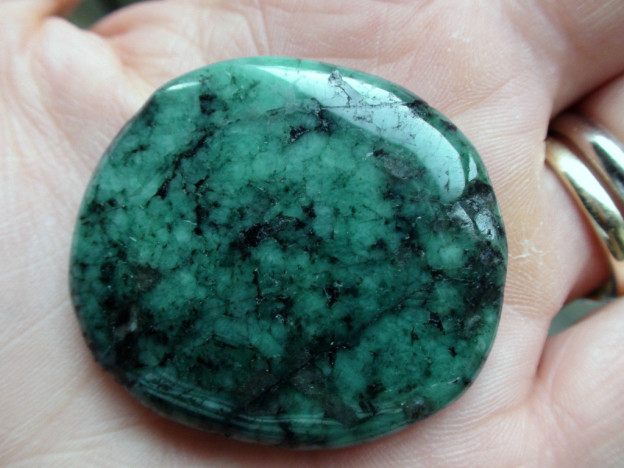PHYSICAL AND OPTICAL PROPERTIES OF THE MOON STONE
The name moonstone is used as a trade name, to designate a mineral from the group of silicates and the family of feldspars. It is more precisely a variety of orthoclase which, when it is in the form of pure crystals, is called adular. Orthoses have the formula: K [Al Si3 O8]. Moonstone has a hardness of 6 to 6.5 on the Mohs scale, and a density of between 2.53 and 2.6. It is a transparent to translucent stone, with a vitreous and pearly luster, a conchoidal or sketchy break. It comes in crystals, pieces or aggregates grained, mostly coarse. Its luminescence is variable according to the color (bluish or orange) but remains weak.
COLORS OF THE MOON STONE
Moonstone is usually colorless, but it can be white or have bluish shades. It is characterized by the famous reflection of a silvery blue, which gives the impression of sliding on the surface of the stone according to the movements that are printed to it. It is this optical phenomenon that is called adularescence. Beware, the gemstone called “Rainbow Moon Stone” is actually a variety of labradorite, another mineral. The Royal Blue Moon Stone has a beautiful transparency and bright blue reflections. The variety of Sri Lanka is pale blue that of India shows a cloudy texture on a beige-brown to orange background.
THE MAIN DEPOSITS OF PIERRE DE LUNE
Moonstone is formed in plutonic and alkaline rocks, particularly in granitic pegmatites, as well as in metamorphic rocks, and sometimes in hydrothermal veins.
The exploited deposits are mainly in India and Sri Lanka, but they are also found in the United States, Madagascar, Burma, Australia and Brazil, as well as in Tanzania.
THE ADVICE OF OUR GEMOLOGIST: HOW TO CHOOSE THE MOON STONE?
To merit this poetic appellation of Moonstone, the adular must have a color devoid of yellowish tones, but instead have rich blue and silver reflections. The most beautiful gems have become quite rare and their price tends to increase. They show a very beautiful depth and clarity. The varieties “cat’s eye” (a transverse reflection) or “star” (several reflections arranged in asterisk) are very rare. The size is almost always in the form of cabochon, whose orientation is chosen to reveal all the splendor of the reflections of the gem. It is necessary to avoid all friction with abrasive materials because the stone of Moon is easily scratched.
METALS ASSOCIATED WITH THE MOON STONE JEWELERY
Most jewelry with a moonstone is silver jewelry or white gold jewelry, because these metals in soft tones and rather cold harmonize perfectly with the lunar evocation of the gem and allow him to reveal all its discrete beauty.
STORIES AND LEGENDS AROUND THE MOON STONE
The Moonstone, so named because of its color, a milky white tinged with blue, like the nocturnal star, is sometimes called hecatolite: it refers to the Greek goddess Hecate, one of the three lunar goddesses. His companions are Artemis and Selene: the latter gave the name to another rock, selenite, which is a variety of translucent gypsum colorless to whitish. The Sanskrit name for the Moon Stone, “chandrakant”, means “beloved of the moon”…
In the Middle East, women wore moon stone to increase their fertility. In the West, in the middle Ages, some thought that couples of lovers could have a vision of their future if they placed a Moon stone in their mouth…
The Moon stones that adorn the threshold of Buddhist temples in Sri Lanka have nothing to do with our mineral, contrary to what we can sometimes read: they are carved friezes arranged in semicircles which symbolize the gradual access to knowledge and nirvana.
A legend tells that Pope Leo X had a Moon Stone that changed color, going from white to blue following the phases of the Moon!
Moonstone was often used at the time of the emergence of Art Nouveau, for decorative objects, including Lalique, which still makes jewelry with this gem.
VIRTUES AND BENEFITS OF THE MOON STONE
Moon stone has been associated in all cultures with the feminine principle, called Yin in Chinese medicine, as the Moon is the female star, while the Sun symbolizes the male principle. It represents the light that reassures in the darkness.
In lithotherapy, it would have healing properties against female disorders (inconvenience of menopause, infertility, menstrual pain …). It would promote eroticism and marital happiness. It would increase intuition, essentially feminine quality, as well as softness and tenderness, and develop tolerance. It would promote the full development of maternal love and soften the temperament of people a little too severe…
The Moon Stone would bring happiness and reduce the risk of accident. It would be for that the asset of the travelers.
ASTROLOGICAL MATCHES OF THE MOON STONE
The Moonstone would be associated with the signs of Pisces, Capricorn, Cancer, and Aquarius. It would correspond to Monday and the planet Uranus. Moonstone is the birthstone of people born in June, and its lucky character would make it a nice gift for … the lily of the valley wedding (13 years old!).




